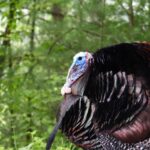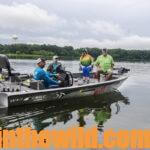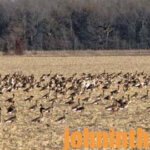Editor’s Note: With the start of bowhunting season only a couple of months away, you need to start practicing now. Frank Pearson of St. David, Arizona, owner and operator of the Frank Pearson School of Archery (www.frankpearson.com) and nationally-known archery coach, has seen the evolution of the bow from the longbow when he first started shooting and competed with up to today’s modern bows and most-technical bowhunting equipment. If anyone knows archery, and how to help an archer shoot better, you can rely on Pearson. This week Frank will give us practical tips on how to shoot better, whether you are a tournament archer or a bowhunter.
 Question: Frank what is the number-one question most archers want to know the answer to that will enable them to shoot better?
Question: Frank what is the number-one question most archers want to know the answer to that will enable them to shoot better?
Pearson: One of the biggest problems in archery today is judging distance. This problem was created when archers put sights on their bows. When we were shooting longbows and recurves, we shot instinctively. We looked at the targets we wanted to hit and mentally calculated the arcs of the arrows as they flew from the bows to the targets. We never had to judge distance in terms of yardage. However, to shoot accurately today with sights, fast bows and high-tech equipment, judging distance may be the number-one factor that determines whether or not you make a successful shot on a target, after you’ve successfully set-up a shot routine. When students come to my bowhunting school, especially target archers, they think there’s some trick to estimating distance. One of the terms that they use is to gap their targets with their sights (guesstimate the exact distance between sight pins set at specific ranges). They also think that the archers who consistently win archery tournaments and successfully take deer each season have some kind of devices on their bows that help them better judge distance. But this isn’t what the successful archers are doing.
The secret to estimating distance is so old that many people have forgotten how to do it. The way you learn to judge distance to the target is to practice judging distance and then actually measure that distance. Successful tournament archers and bowhunters spend more time practicing judging distance than they do practicing shooting their bows. What I usually tell a person who is just getting started in 3D archery is, “If you want to be a good shooter, carry a range finder with you at all times during the day. Keep looking at objects that you believe to be 30 yards away and guessing that distance. Then take your range finder, look at the target, get the exact distance, and see how far off you are from the actual distance to the target.” Once they learn what 30 yards looks like, they won’t have to guess at that distance any more.
 Question: Okay, once you learn what 30 yards from you to a target looks like, how do you learn the other ranges that 3D archers and bowhunters have to know to shoot accurately?
Question: Okay, once you learn what 30 yards from you to a target looks like, how do you learn the other ranges that 3D archers and bowhunters have to know to shoot accurately?
Pearson: The reason for learning what 30 yards looks like is because most 3D targets are set-up no farther away than 45 yards. Once you know what 30 yards look like, then you can much-more-easily determine the distance out to 45 yards or back in to zero. Then you need to next learn to determine 40 yards. If you don’t spend the time to learn those two distances, you may as well not shoot 3D archery. Then you can begin to determine the other distances you need to know to shoot accurately. The real secret to shooting tournament archery or to consistently becoming a successful bowhunter is to spend more time judging distance than you do shooting the bow. In this day and age, and with the equipment we have today, I don’t think a bowhunter should be permitted to hunt unless he carries a range finder with him on the hunt.
 Question: Frank, why do you feel this way?
Question: Frank, why do you feel this way?
Pearson: Most bowhunters only shoot their bow 3 months out of the year. They pick-up their bows the month before hunting season starts and try to get their muscles in shape and their shooting forms perfected. However, they’re not going to be proficient in guessing yardage. Using range finders is legal for archers in every state, and I’d much rather see a hunter have a range finder, use it and be proficient with it, than have a hunter not use a range finder, arrow a deer and not be able to recover it.
To learn much more about bowhunting, get John E. Phillips’ eBooks, print books and audiobooks by going to https://johninthewild.com/books.
Tomorrow: Have Your Bow Tuned and Understand Your Peep Sight










